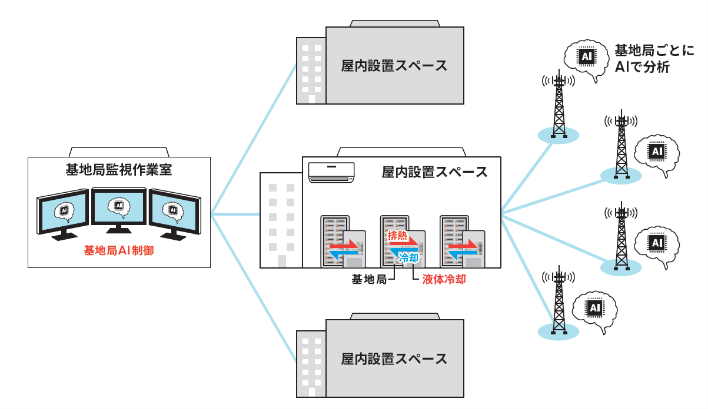Improvement in Efficiency and Flexibility of Thermal Power
The Federation of Electric Power Companies of Japan
Outline
Although thermal power generation has accounted for more than 80% of the generated power in Japan since the Great East Japan Earthquake, Strategic Energy Plan calls for a 26% reduction in greenhouse gas emissions from FY2013 levels by 2030 through the promotion of an energy mix (thermal power generation accounts for about 56% of the total, renewable energy about 22-24%, and CO2 emission factor of 0.37 kg-CO2/kWh). In the transition to a zero-emission society, thermal power generation will be required to play a certain role, and the Federation of Electric Power Companies of Japan (FEPC) and partners will contribute to the reduction of greenhouse gases by working towards the realization of next-generation thermal power generation[1] that will further improve the efficiency of thermal power generation. In addition, efforts have been made to improve the flexibility of thermal power generation in order to enable greater adoption of the variable renewable energy.
Description
[Further improvement in efficiency of thermal power plants]
The thermal efficiency of thermal power generation is improving year by year with the introduction of the latest technology (average gross thermal efficiency: 45% in 2015FY, 41% in 1990FY, LHV basis), and remains the highest level in the world.
FEPC and partners are always introducing the latest high-efficiency coal-fired thermal power such as 600°C/630°C-class ultra-supercritical (USC) thermal power with improving steam condition. And high efficiency has also achieved at medium scale power by developing air-blown Integrated coal Gasification Combined Cycle (IGCC).
For natural gas-fired thermal power generation, combined cycle power generation (Gas Turbine Combined Cycle, GTCC) started to be introduced in the 1980s, and the efficiency was greatly improved. At present, 1600°C-class GTCC with higher thermal efficiency due to the larger scale and the higher turbine inlet temperature, was adopted and is in commercial operation.
Our efforts will promote to improve power generation efficiency to reduce CO2 emission.
[Improvement in flexible operation of thermal power plants]
Thermal power generation plays an important role in adjusting the balance of power supply and demand and adjusting the frequency of the grid in order to maintain a stable and inexpensive power supply while promoting the spread of variable-type renewable energy. For the further introduction of the renewable energy sources, a flexible operation of thermal power plants, i.e., rapid start-up or load change, or lower-load, is required as well as a high efficiency operation in partial load conditions.
Fsor the purpose to improve a performance of the flexible operation of gas turbine systems, research and development of Advanced Humid Air gas Turbine (AHAT) system is carried out; - the AHAT system has high performance in flexible operation with high efficiency despite the power capacity of the system is relatively small, i.e. 200MW-class. The reliability of the AHAT system is demonstrated using a 40MW-class pilot plant. The performance of the flexible operation of the AHAT system is confirmed by a conceptual design of a commercial scale plant and dynamic characteristics analysis of the system.[2]
Partner(s)
Hokkaido Electric Power Co., Inc., Tohoku Electric Power Co., Inc., Tokyo Electric Power Company Holdings, Inc., Chubu Electric Power Co., Inc., Hokuriku Electric Power Co., Inc. , The Kansai Electric Power Co., Inc., The Chugoku Electric Power Co., Inc., Shikoku Electric Power Co., Inc., Kyushu Electric Power Co., Inc., The Okinawa Electric Power Co., Inc. , Electric Power Development Co., Inc., Central Research Institute of Electric Power Industry
Supplementary information
[1] Ministry of Economy, Trade and Industry "Technology Roadmap for Next Generation Thermal Power Generation”
https://www.meti.go.jp/press/2016/06/20160630003/20160630003.html
[2] CRIEPI Report M18003, “R & D on the Advanced Humid Air Gas Turbine (AHAT) System -Part IV Confirming long-term reliability using a pilot plant and examining a commercial-scale system-” (in Japanese)
https://criepi.denken.or.jp/jp/kenkikaku/report/detail/M18003.html
Other Innovation Challenges
Enhancing power sector resilience against disaster risks
The Federation of Electric Power Companies of Japan
Maintaining grid stability for the mass introduction of renewable energy
The Federation of Electric Power Companies of Japan
Promotion of electrification and energy conservation
The Federation of Electric Power Companies of Japan
Promotion of hydrogen use
The Federation of Electric Power Companies of Japan
Similar Innovation Challenges
Accelarating the penetration of renewable energy resources with “Open Energy System”
Sony Group Corporation
Achieving net-zero carbon emissions from plant factories using full artificial lighting
Taikisha Ltd.
Advanced technology for buildings providing energy-saving and comfortable indoor environment (under Net Zero Energy condition)
Mitsubishi Electric Corporation
AI control reduces base station power consumption by up to 50%
KDDI CORPORATION






